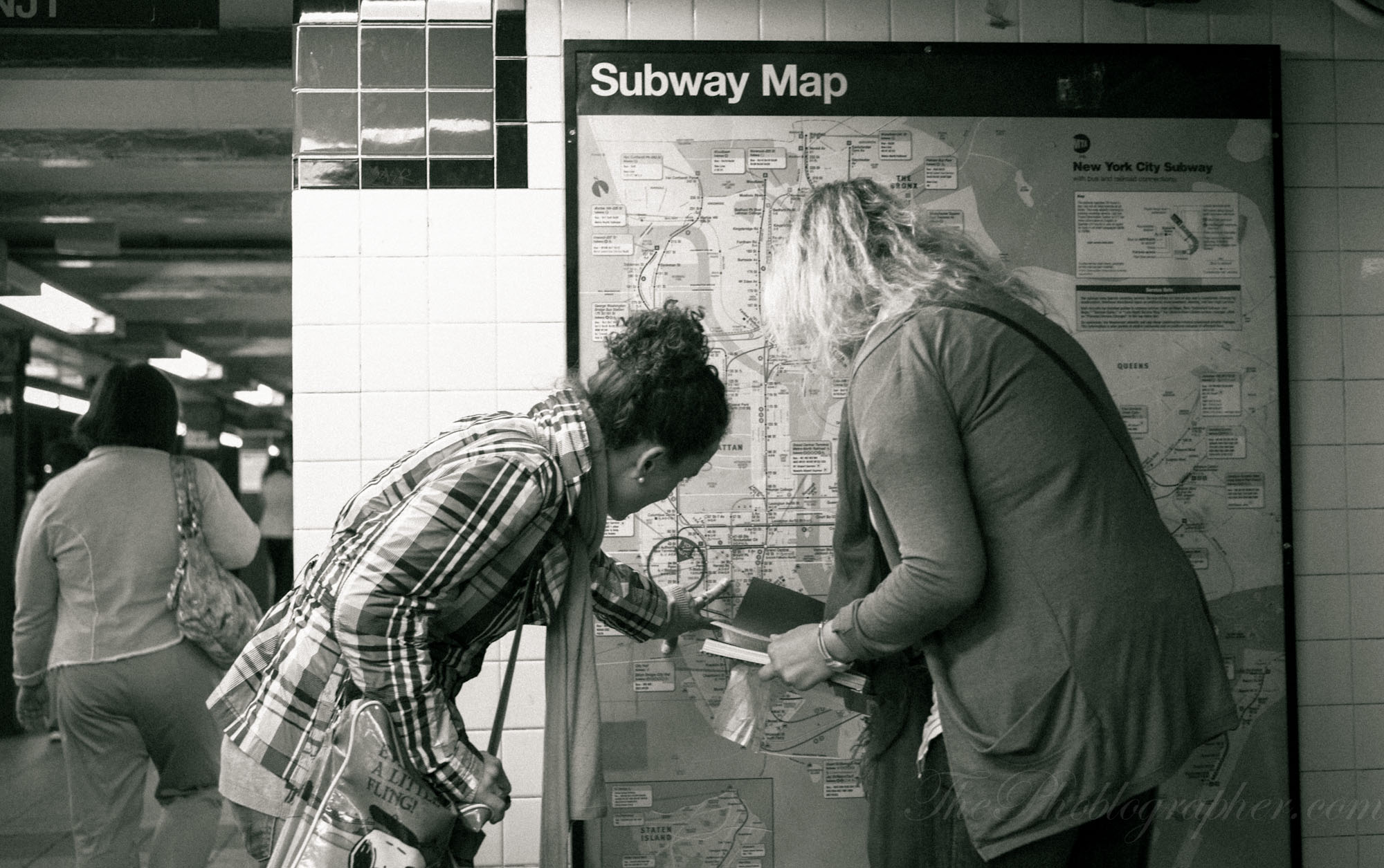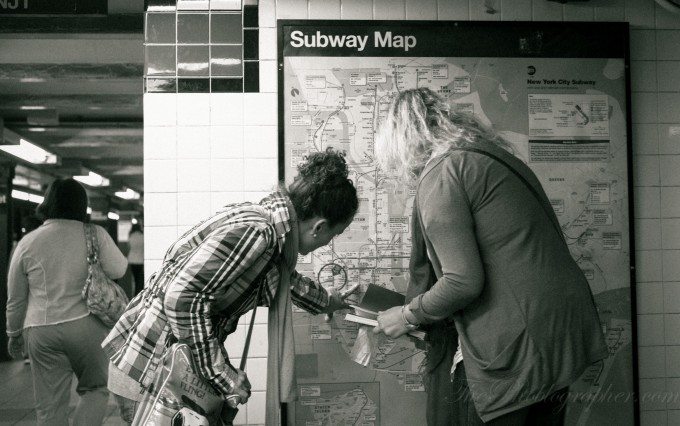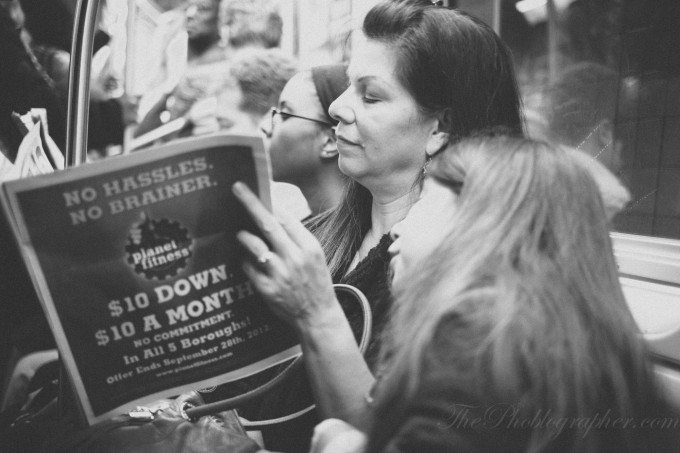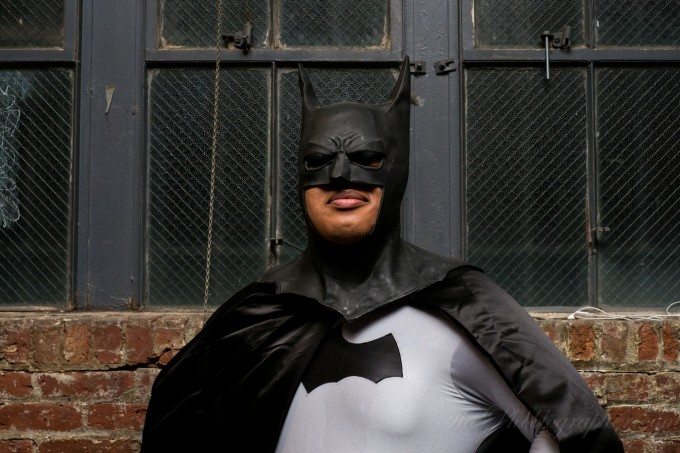Since the release of firmware 2.0 for the Fujifilm X Pro 1; I’ve been hitting the streets of NYC and testing the revamped autofocus. Fujifilm claims the autofocus to be significantly faster than before; and those statements are indeed true. Not long ago, I put it against my Olympus OMD EM5, and the X Pro 1 is still slower. I found it to be a tad faster than my 5D Mk II in certain situations but still slower in others. I used to shoot street photography with my 5D Mk II and I did work with it that I was very proud of.
This post is an update to my findings from the full review of the Fujifilm X Pro 1: testing it for candid shooting not only in the streets of New York City and Brooklyn, but also at an event. I used the 35mm f1.4 (also well reviewed) which received a firmware update as well.
Gear Used
Autofocus Performance
First off, before I get into my evaluation, I should explain to many of you how I used the camera. My settings are:
– Single focus and sometimes continuous
– Looking at a scene and then determining not only the light available but how I would want to compose my photo. After that is figured out, I will either choose the center focusing point or one of the top left or top right points. Then while approaching varying subject matter, I will always put the main subject of the frame in the focusing point.
– As one walks through Brooklyn or NYC, the amount of light around varies due to shadows, trees, buildings, etc. To compensate, I will often set the camera to either aperture priority and crank up the ISO in combination with stopping down a bit, or I will go to full manual and based on the rules of Sunny 16 and the way that the X Pro 1’s metering works, set my exposure while scanning a scene and moving my fingers to the dials to expose accordingly. I have enough experience with the X Pro 1 to be able to twist a dial or the aperture ring and be able to mentally count how many clicks I’ve made and therefore my exposure.
I will never focus and recompose because this throws off the entire plane of focus and a subject that you think will be sharp won’t be. The focus and recompose method is outdated at this point as well.
I also take off the AF assist bulb because I don’t want to look like a lighthouse.
Performance
The X Pro 1’s focusing is very often a hit or miss situation still. The best practice is to place the focusing point on a contrasting area. That works well enough most of the time.
One of my preferred methods of shooting is from the hip. I can often feel when the camera has locked focus and it really is quite fast.
When looking through the viewfinder, the focusing can still be a tad bit slow but fast enough still for most uses in street photography and candid photography providing that your subject is stagnant. In street and candid (event and wedding) photography, that isn’t always the case and your subject can sometimes be flailing about quite a bit. In that case, good luck.
The X Pro 1 is still a tad too slow for moving subjects. The Olympus OMD is much faster, but it also has the advantage of a smaller sensor; which therefore means that more will be in focus at a given aperture.
To make this completely fair, the best comparison would be against the Sony NEX 7 due to the same size APS-C sensor. Unfortunately for Fujifilm, the Sony NEX 7’s autofocusing performance with many of the E Mount lenses still leaves the X Pro 1 in the dust. During my time with the NEX 7, I was able to quickly, sharply and accurately snap photos on the street with the 24mm f1.8. On a given photo walk, I also came back with more photos that I considered to be keepers than with Fujifilm’s. Where Fujifilm still holds the advantage is in image quality.
If you really want to capture a moving subject, ensure that you’re stopped down. And with the other systems? They can capture movement with the lens wide open.
 Something that I found weird during my tests is that sometimes the focus seemed to work better when I used my LCD screen vs the Optical viewfinder.
Something that I found weird during my tests is that sometimes the focus seemed to work better when I used my LCD screen vs the Optical viewfinder.
Using the LCD screen is a totally viable option since it can give you an even more stealthy approach than bringing a camera up to your eye and snapping a photo, and the fact that the OMD and NEX 7 both have excellent screens for focusing and capturing a subject.
But in terms of ergonomics, I really prefer to use the viewfinder, however the disadvantage of using the optical viewfinder is that you don’t really know if your subject is in focus.
This situation happens much more often in low light situations and with the AF assist bulb off but it does happen nonetheless and it can be annoying.
A way that this could have been fixed is with the lens design. Designing the lens for zone focusing (IE hyperfocal length shooting) would have made it much easier because when the focusing is misbehaving, I would simply switch it to manual focus. Granted, the camera can display a meter on the bottom of the viewfinder to tell you just how much is in focus; but why can’t I have that information on the lens to make my shooting workflow faster?
As I sit here typing this report, I’m also double checking my facts by shooting random things around my apartment. The focusing issue now is that it is still not the smartest around despite it being fast.
For example, the camera focuses on a heater not too far away from my dining table vs the chair closer to me that I’m telling it to focus on and clearly putting the focusing on a contrast point that is obvious enough. In order to get it in focus, I often need to totally switch the focusing point or switch up my composition.
Low Light Focusing
As stated earlier, focusing in low light can be a killer at times. I attended New York Comic Con’s Brooklyn Defender event at Brooklyn Bowl with the intention of trying out the focusing.
While the camera still frustrated me in terms of focusing, it did sometimes nail my subject properly. When it did though, it was slower than my liking to focus. I’m very used to simply pointing the camera at a subject and within a matter at one second taking the photo. This time around, it took anywhere from three to five seconds because sometimes the camera wouldn’t focus on the subject I asked it to.
As a shooter, it feels weird when someone is standing there politely posing for you when you ask for their photo and they’re waiting for some indication that you’ve taken then photo. But instead, you’re just sitting there hoping that it has focused.
Manual Focusing
Here is where Fuji must be absolutely praised and with nothing more than my absolute highest praises. Fujifilm fixed the damn manual focusing abilities of the X Pro 1. It no longer feels like you need to rotate the lens for an eternity to get from two feet to four feet away. The viewfinder is also more than sharp enough for the user to tell what is in focus and what isn’t.
At the time of writing this review update, I’m also testing out Lomography’s new film in my Yashica Electro 35 GSN. And the new manual focus on this camera makes me want to just switch it into manual focus mode and never take it out.
Conclusions
In the end, I believe that the X Pro 1 has indeed become faster but not smarter. Fujfilm needs to update their focusing algorithms; and I’m not sure that that can be fixed with a firmware update. Unfortunately, we will need to upgrade cameras in order to get that feature.
I will continue to test the focusing and if something major comes up, I will update this post accordingly. At the time of writing this post, I’m also advising our News Editor Felix Esser on which camera to get: the XE-1 or the OMD.
“Autofocus is critical when I’m taking photos of my kids.” he says.
Though I argued for the X Pro 1 for his landscape work due to the better sensor. However, the OMD is more than good enough for someone with his needs.
Please Support The Phoblographer
We love to bring you guys the latest and greatest news and gear related stuff. However, we can’t keep doing that unless we have your continued support. If you would like to purchase any of the items mentioned, please do so by clicking our links first and then purchasing the items as we then get a small portion of the sale to help run the website.











